
Clinical Nutrition For Dummies
Published by:
John Wiley & Sons, Inc.
111 River Street
Hoboken, NJ 07030-5774
www.wiley.com
Copyright 2014 by John Wiley & Sons, Inc., Hoboken, New Jersey
Published by John Wiley & Sons, Inc., Hoboken, New Jersey
Published simultaneously in Canada
No part of this publication may be reproduced, stored in a retrieval system or transmitted in any form or by any means, electronic, mechanical, photocopying, recording, scanning or otherwise, except as permitted under Sections 107 or 108 of the 1976 United States Copyright Act, without the prior written permission of the Publisher. Requests to the Publisher for permission should be addressed to the Permissions Department, John Wiley & Sons, Inc., 111 River Street, Hoboken, NJ 07030, (201) 748-6011, fax (201) 748-6008, or online at http://www.wiley.com/go/permissions .
Trademarks: Wiley, For Dummies, the Dummies Man logo, Dummies.com, Making Everything Easier, and related trade dress are trademarks or registered trademarks of John Wiley & Sons, Inc., and may not be used without written permission. All other trademarks are the property of their respective owners. John Wiley & Sons, Inc., is not associated with any product or vendor mentioned in this book.
LIMIT OF LIABILITY/DISCLAIMER OF WARRANTY: WHILE THE PUBLISHER AND AUTHOR HAVE USED THEIR BEST EFFORTS IN PREPARING THIS BOOK, THEY MAKE NO REPRESENTATIONS OR WARRANTIES WITH RESPECT TO THE ACCURACY OR COMPLETENESS OF THE CONTENTS OF THIS BOOK AND SPECIFICALLY DISCLAIM ANY IMPLIED WARRANTIES OF MERCHANTABILITY OR FITNESS FOR A PARTICULAR PURPOSE. NO WARRANTY MAY BE CREATED OR EXTENDED BY SALES REPRESENTATIVES OR WRITTEN SALES MATERIALS. THE ADVISE AND STRATEGIES CONTAINED HEREIN MAY NOT BE SUITABLE FOR YOUR SITUATION. YOU SHOULD CONSULT WITH A PROFESSIONAL WHERE APPROPRIATE. NEITHER THE PUBLISHER NOR THE AUTHOR SHALL BE LIABLE FOR DAMAGES ARISING HEREFROM.
For general information on our other products and services, please contact our Customer Care Department within the U.S. at 877-762-2974, outside the U.S. at 317-572-3993, or fax 317-572-4002. For technical support, please visit www.wiley.com/techsupport .
Wiley publishes in a variety of print and electronic formats and by print-on-demand. Some material included with standard print versions of this book may not be included in e-books or in print-on-demand. If this book refers to media such as a CD or DVD that is not included in the version you purchased, you may download this material at http://booksupport.wiley.com . For more information about Wiley products, visit www.wiley.com .
Library of Congress Control Number is available upon request
ISBN 978-1-118-66546-6 (pbk); ISBN 978-1-118-66576-3 (ebk); ISBN 978-1-118-66581-7 (ebk); ISBN 978-1-118-66588-6 (ebk)
Manufactured in the United States of America
10 9 8 7 6 5 4 3 2 1
Chapter 1
Getting Clinical about Nutrition
In This Chapter
 Conceptualizing clinical nutrition
Conceptualizing clinical nutrition
 Understanding the fundamentals of clinical nutrition
Understanding the fundamentals of clinical nutrition
 Becoming aware of the growing international focus on proper nutrition
Becoming aware of the growing international focus on proper nutrition
T he fact that you are reading this book means that you are at least partially tuned into the connection between what you eat and how it affects your health. Congratulations! Either through a course you are taking or through your own personal curiosity, you are choosing to get better acquainted with the study of diet and how it influences your overall status of health and wellness.
The relationship between what you eat and how healthy you are can be complex, but it's not impossible to understand. In fact, this text focuses on a few simple guidelines:
- You must eat fruits, vegetables, and whole grains.
- You must moderate your fat, salt, and sugar intakes.
- You must exercise.
If you follow all these guidelines, you'll find yourself more healthy than not and will realize the truth behind the adage that you are what you eat.
This chapter takes you on a quick tour of the fundamental principles related to the study of clinical nutrition. Retaining a basic understanding of the concepts I introduce you to here is a great foundation for all the chapters that follow.
Pillars of the Practice: Recognizing theLinks between Nutrition and Health
To state the obvious, food is essential for human survival. Since humans or some form thereof first started to walk the earth, the human body has evolved to benefit from the foods available in a given environment.
Generations of trial and error, in which we sampled literally tens of thousands of different species of potential food, enabled us to obtain from nature the nutrients needed for life. Our bodies adapted over thousands of years to both the bounty and the scarcity of what existed in the environment what we were able to gather, hunt, and farm.
Recently, however, that relationship has been altered, and along with that change is a realization that modern eating habits aren't necessarily better. From that realization have sprung efforts to return to a healthier way of eating.
Revisiting traditional views of food and health
Just up until the middle of the last century, people ate a variety of foods that were in balance with the major food groups. Through the process of evolution, humans naturally gravitated toward a diet that was relatively in tune with what the body needed to survive. The availability of and our preferences for food were naturally balanced in a way that provided a healthy diet. Whether the available diet and the human body's needs evolved together is uncertain, but one thing we do know for sure is that, back then, humans didn't overeat as much.
A snapshot of the past
Before industrialization, globalization, and modern farming and transportation techniques, food was scarcer than today. You ate what you needed not what you wanted and what was available.
Convenience stores selling all kinds of processed foods didn't dot every city corner. Nor were there gigantic supermarkets holding thousands of items to choose from. If you wanted a grape grown in Chile or an apple grown in New Zealand, you needed to live in (or pretty darn close to) those countries, because systems for transporting fresh food around the globe didn't exist.
Basically, you had yourself to rely on: You had to grow and harvest your own food, and prepare it yourself all tasks that involve lots of manual labor. Of course, hunger was an issue (as it still is for too many people today), but the overabundance of food that's common today simply did not exist back then.
Fast forward to today
Today, the food landscape is very different. You can walk into a supermarket and buy almost any fresh product from any corner of the world. You can swing by a convenience store for a quick snack and a mega-gulp. You can go to a fast-food restaurant and buy a meal packed full of a day's worth of calories and gobble it down within 15 minutes of walking in the door. You have the world at your culinary disposal.
Ample quantities of food are available, and you don't have to exert much physical labor to procure it. Before, if you wanted a special type of walnut from some distant land, you'd probably have to go there yourself, or order it and wait four months for it to arrive at the dock. You wouldn't be able to find it prepackaged in plastic in aisle 10 of your local megamart.
Next page
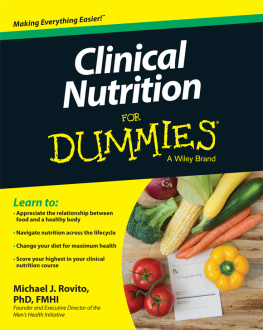



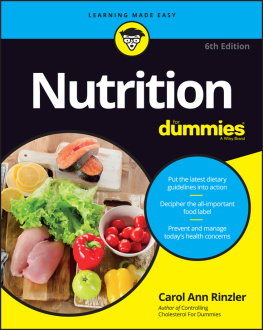
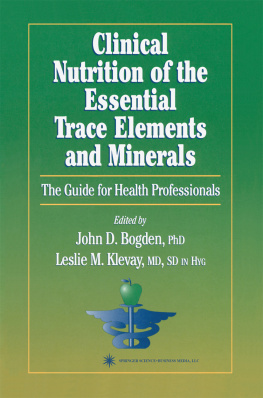
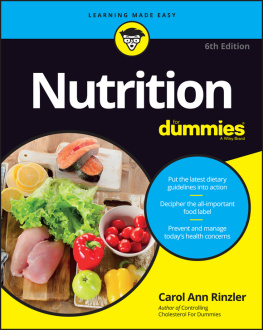
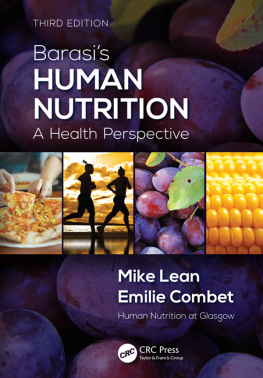

 Conceptualizing clinical nutrition
Conceptualizing clinical nutrition